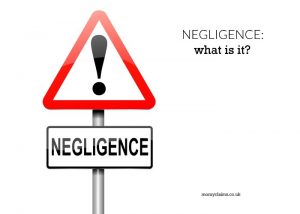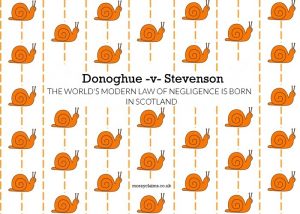Accidents which are no one's fault ... An accident is an event which could not reasonably have been foreseen by anyone and for which no one should be held responsible. If your injury is the result of such a mishap - a ‘pure’ accident - you will not be able to make a successful claim for compensation. ... Accidents which are someone's fault The modern idea of negligence dates from the 1930s. Negligence: what is it ? The basic definition of negligence that lawyers now use comes from the Scottish case of Donoghue –v- Stevenson. As a result of that case and other later cases, the law places defined limits on the classes of person who can claim and the types of injury for which they can claim. If you are going to be able to claim successfully, the person who injured you has to have been in such a position that they ought to have had you in mind when considering the possible impact of their actions in the circumstances. In practice, from the point of view of the person owing the duty of Continue Reading
Donoghue –v- Stevenson: the world’s modern law of negligence is born in Scotland
If you have an accident claim in Scotland, it is covered by the Law of Delict. In England, it is known as the Law of Torts. The modern law of Delict – covering the duties people owe to others not to cause them injury - can be traced to a particular case, arising from an incident which occurred in Paisley on Sunday, 26 August 1928. The case of Donoghue –v- Stevenson is widely known in legal circles, not just in Scotland and the UK but throughout the world, as the source of the modern law of negligence. A night out in Paisley On the evening in question, May Donoghue, at that time a 30-year-old shop assistant, boarded a tram in Glasgow for the thirty-minute journey to Paisley. At around 8.50pm, she and a female friend took their seats in the Wellmeadow Café in Paisley’s Wellmeadow Place. The café owner, Francis Minchella, took the order and May's friend ordered, and paid for, a pear and ice, and an ice-cream 'float'. Mr Minchella brought the order and poured part of Continue Reading

